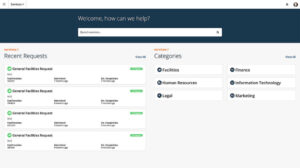Predicting the Future of ITSM — How Did We Do? Part 3: The Role of Support
In 2015, we published five predictions of how IT would change by 2020. Here’s a look at the third of those predictions, and our take on where we are today.
Back in 2015, we published five predictions of how IT would change by 2020. So, how did we do? Let’s take a look.
Over the course of this week, we’ll publish one prediction and result per day. Monday’s post was Part 1: The Work, and yesterday we posted Part 2: The Tech.
In our original post, How IT Will Change by 2020 – Research from HDI, we elaborated on five topics of forecasting presented in Foresight Is 2020: Industry Predictions from the HDI Strategic Advisory Board, written by Roy Atkinson and Craig Baxter.
Here’s a look back at the third of the predictions made in that post five years ago, and our take on where we are actually at today.
The Role of Support
2015 prediction: The focus of IT support will shift from answering questions and break/fix activities to “workforce enablement”—proactively providing employees with the applications and knowledge needed to maximize productivity.
2020 reality: IT support has definitely made strides toward being more personalized, which has had positive effects on both employee satisfaction and productivity.
Progress has been made at several levels.
Channel level: One of the most important advancements (though it’s been set back considerably by the pandemic) has been the expansion of “Genius bar” type in-person walk up service.
Research from HappySignals shows that walk-in service has both the highest happiness level (by a significant margin) as well as the smallest amount of lost productive time. Our own experience has shown that in-person service also improves the perception of IT within organizations as being helpful rather than a hindrance.
With most employees currently working from home and face-to-face contact something to be avoided, many organizations have shifted to delivering virtual tech bar service in this environment.
Meanwhile, the combination of interactive voice response (IVR), natural language processing, and artificial intelligence (AI) has also improved the efficiency and personalization of phone support. Though employees are sometimes frustrated because the systems don’t “hear” well or they make it too difficult to reach an actual human, the technology is unquestionably getting better.
Portal level: Personalization of the self-service portal experience has advanced by understanding more about who is using the portal. Based on the employee login, the system will only display information about, for example, software used in the HR department if the employee works in HR; it will hide information about systems used by finance or in the warehouse that HR workers would be unlikely to ever use.
Role-based personalization in the portal means each employee sees the services, alerts, FAQs, and other information specific to their function. It helps them solve problems without needless complexity.
 Form level: The service portal can use technologies like conditional branching to make sure employees are asked all of the questions necessary to resolve their issue, but no questions that are unnecessary. For example, the employee would be asked about OS version for a tablet or laptop issue, but not for a printer hardware problem.
Form level: The service portal can use technologies like conditional branching to make sure employees are asked all of the questions necessary to resolve their issue, but no questions that are unnecessary. For example, the employee would be asked about OS version for a tablet or laptop issue, but not for a printer hardware problem.
Fields are also pre-populated with as much as possible (name, phone, email address, etc.) based on the employee login.
Finally, all support channels can capture incident data for analysis to drive continual improvement.
Conclusion: While the support process may still not be as proactive as envisioned by HDI in 2015, it has definitely become more personalized, improving both the employee experience with IT and productivity.
How do you think we, and HDI, did with this prediction? Leave your thoughts in the contact form at the top of this page or reach out on Twitter if you’ve got feedback for us.
NOTE: These posts would not have been possible without the expert input of Kinetic Data’s director of customer services, Matt Howe.



